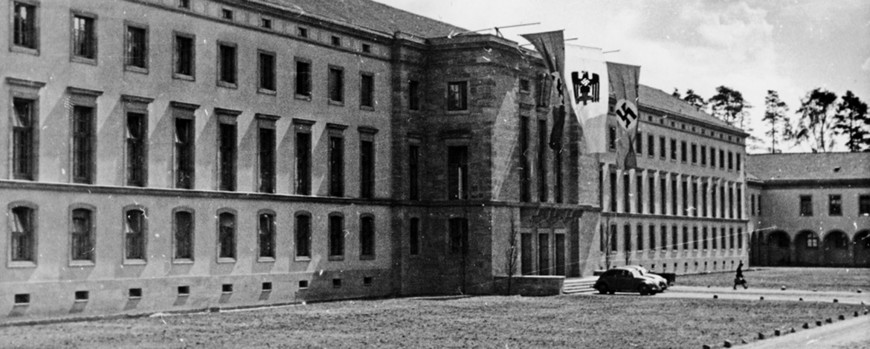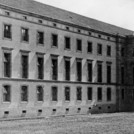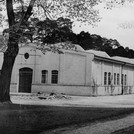Main Depot of the German Red Cross (1896–1945)
In 1896, the Central Committee of the Prussian Red Cross, which became the German Red Cross (GRC) in 1921, decided to build the “Neubabelsberg Central Depot” on today‘s Griebnitzsee Campus. It was put into operation two years later and included two villas used as residential and office buildings at the western entrance to the site (building 2, 3). Additional houses such as the clothing store (building 5) were erected in 1938 in the course of intensified preparations for war. In the same year, a decision was made to set up the GRC’s new presidential building, which was initially planned for Berlin, in the immediate vicinity of the main depot. Forced laborers from a nearby prisoners-of-war camp had to build the new houses. Building 1, designed by Norbert Demmel and Emil Fahrenkamp, was ready for occupancy at the beginning of 1943 and survived the war unscathed. When a bomb attack by the Allies gutted the motor vehicle hall in March 1944, prisoners from Sachsenhausen concentration camp had to build an air raid shelter. The GRC main depot was occupied by the Soviet army at the end of April 1945. Leading GRC officials had previously committed suicide, such as its executive director, SS Obergruppenführer and General of the Waffen-SS Dr. Ernst-Robert Grawitz, who had been responsible for experiments on prisoners in concentration camps. In September 1945, the Soviet Military Administration (SMAD) ordered the dissolution of the German Red Cross in the Soviet occupation zone.



